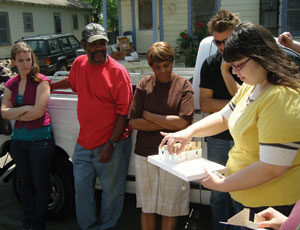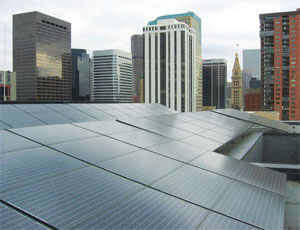Despite the prolonged recession, the number of LEED-registered projects in Colorado continued to grow in 2008 and 2009. During the six-month period from January through June in 2008 and during 2009, LEED NC-registered projects increased by 107%, and LEED EB and LEED EBOM projects increased by 81%.


“The existing building stock in the U.S. offers an enormous opportunity for green building and our ability to positively impact the environment,” says Deb Kleinman, executive director of the U.S. Green Building Council Colorado Chapter, who has seen consistent growth in the number of LEED EB and EBOM projects in Colorado.
“Focusing on existing buildings is a critical component to rapidly addressing climate change,” she says.
Three landmark Colorado buildings have applied distinctly different approaches to going green.
The Historic Sugar Building adopted low-cost, common-sense, energy-efficiency strategies. The Governor’s Residence and the State Capitol purchased new systems and equipment using an alternative-funding mechanism that guarantees utility savings in a performance contract.
Historic Sugar Building 1530 16th St., Denver
The six-story, 64,000-sq-ft building was originally constructed in 1904 by the Great Western Sugar Co., but it had fallen into disrepair until February 2003, when it was taken over by the environmentally conscious management company Urban Villages. Now the building is fully occupied and since 2007 has undergone significant upgrades to reduce energy consumption.
Sugar Cube
Denver
Amount: $35 million
Owner: Urban-1547 B Lake Street LLC
Architect: Kuwabara, Payne, McKenna, and Bloomberg Architects
Contractor: JE Dunn Construction Co.
Engineer: Halcrow
Solar Installer: SolSource Inc.
Start: July 2008 Finish: Aug. 2009
“We believe that most energy efficiencies derive from operations and best practice and not a fancy replacement or additional piece of equipment,” says Nick Koncilja, assistant manager for Urban Village’s Denver properties.
Koncilja says energy-efficiency upgrades reduced electrical consumption in the building by 20,000 kW hrs/month. Improvements included simple, practical solutions such as locked thermostats, which allow tenants to adjust temperatures by only 2-3 degrees.
Another energy saver was the installation of timers on motors and fans that were running 24 hours a day but...

Post a comment to this article
Report Abusive Comment